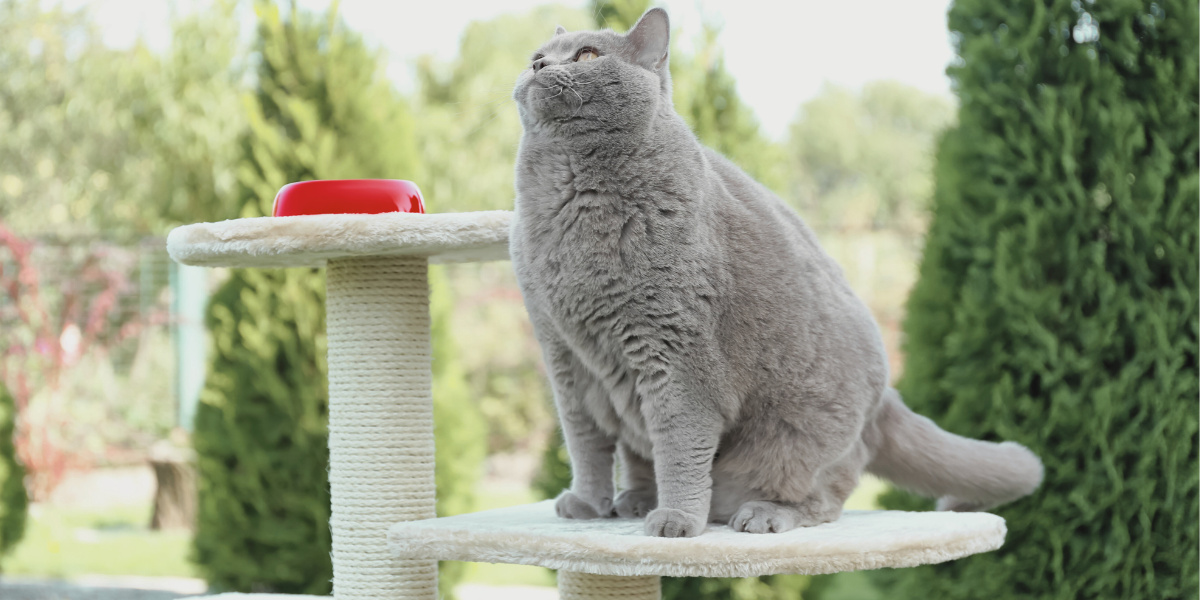Understanding If Your Cat Is Overweight
Obesity is a growing concern among pet owners, and cats are no exception. An overweight cat is at risk for various health issues, including diabetes, heart disease, and joint problems. However, determining if your cat is overweight is not always straightforward. Instead of relying solely on numbers, pet owners should observe their feline’s body shape, behavior, and activity level.
Here’s how to assess whether your cat is carrying extra pounds and what you can do to help them return to a healthy weight.
How to Tell If Your Cat Is Overweight
Look at Your Cat from Above
One simple way to check if your cat is overweight is by looking down at them from above. In an ideal weight range, your cat should have a discernible waistline right in front of its hips.
Signs your cat may be overweight:
If your cat has a straight or bulging figure from above, it may be carrying excess fat.

Check Their Side Profile
Stand beside your cat and observe their body from the side while they are standing. A fit cat will have a slight tuck in their belly, where the abdomen appears raised rather than bulging.
Signs of an overweight cat:
Keep in mind that some cats have a primordial pouch, a natural flap of skin under their belly, which should not be mistaken for obesity.

Feel for Their Ribs
Another effective method is the rib test. By placing your hands gently on your cat’s sides, you should be able to feel their ribs without pressing too hard.
Indicators of excess weight:
Healthy-weight cats have ribs that are easily felt but not overly pronounced.
Consult Your Veterinarian
If you are unsure about your cat’s weight, a visit to the vet is the best way to determine their ideal size. Veterinarians use a body condition score (BCS) ranging from 1 (too thin) to 9 (obese) to evaluate a pet’s weight. The goal is to maintain a score of around 4 to 5.
Certain breeds, such as Maine Coons and Norwegian Forest Cats, are naturally larger and may weigh more without being overweight. Your vet can provide a personalized weight assessment and recommend a healthy diet and exercise routine.

How to Help Your Cat Maintain a Healthy Weight
If your vet confirms that your cat is overweight, adjusting their diet and lifestyle is crucial.
Portion Control & Nutrition
Encourage Exercise
Monitor & Adjust
Final Thoughts
Maintaining a healthy weight is essential for your cat’s well-being and longevity. Recognizing the signs of feline obesity and taking proactive steps to manage their weight can help your cat enjoy a happier, healthier life. If you suspect your cat is overweight, consult with your veterinarian for a tailored health plan.






Facebook Comments